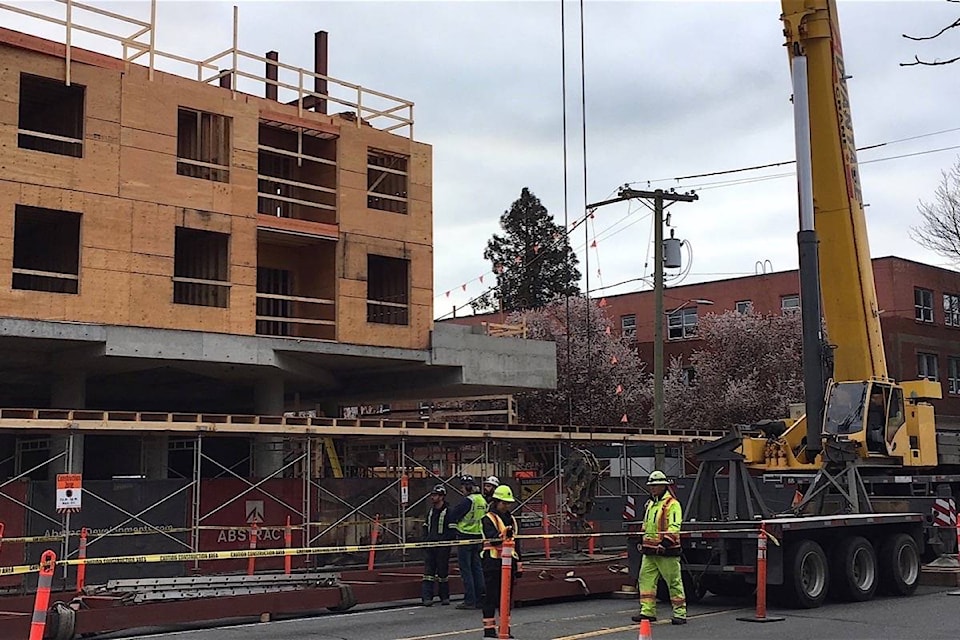B.C. isn’t following Washington’s lead to make engineered wood construction mandatory for public buildings, but Forests Minister Doug Donaldson says the trend to international acceptance is good for B.C.’s forest products industry.
Washington’s state legislature is considering a law to require cross-laminated timber (CLT) for public construction of 12 storeys or less. Donaldson said this week he isn’t currently considering a similar mandate, but he encourages wood construction whenever he can.
“In our public buildings I consistently bring to the table the perspective that if we’re investing in big capital projects like schools, and even from a seismic improvement perspective, where can we fit wood in that makes sense,” Donaldson said in an interview from Port Alberni.
The B.C. ministry has a wood innovation group studying new techniques, and Donaldson has carried on B.C. and Canada’s international marketing efforts in Asia. His trade trip to China last fall included a visit to a wood constructed resort in a country trying to reduce its air pollution and massive use of concrete.
The trend to wood construction is fuelling growth in lumber trade. Seattle-based Wood Resources International reports that 2017 was a record for global softwood lumber trade, with demand increasing in the U.S. China and Europe. Japan is a mature market for B.C. high-end lumber, and imports to China have rebounded and reached their highest level since 2015.
China traditionally buys low-cost lumber from North America and Russia, with higher grades mainly coming from Chile, Sweden and Finland.
RELATED: B.C. wood high-rise is the talk of Asia
Donaldson said enthusiasm for CLT and other engineered wood techniques remains high in China, as President Xi Jinping is calling for efforts to reduce greenhouse gas emissions and clean up air quality in the country’s rapidly growing cities.
An international committee of engineers, architects, fire officials and other experts formed in 2016 to develop changes to the International Building Code. Their target is to have design and construction standards for tall wood buildings prepared by 2021.
The construction of Brock Commons, an 18-storey student residence at the University of B.C. has sparked international attention. It uses cross-laminated timber panels manufactured by Penticton-based Structurlam, which earlier pioneered the “Glulam” laminated wood beams that are now commonly used in construction.
Another B.C. project that put engineered timber on the world map was the 2010 Olympic Oval in Richmond, with the world’s largest timber roof spanning six acres. Built for speed skating events, it has been converted into a multi-sport facility that has hosted international events from fencing to wheelchair rugby.
